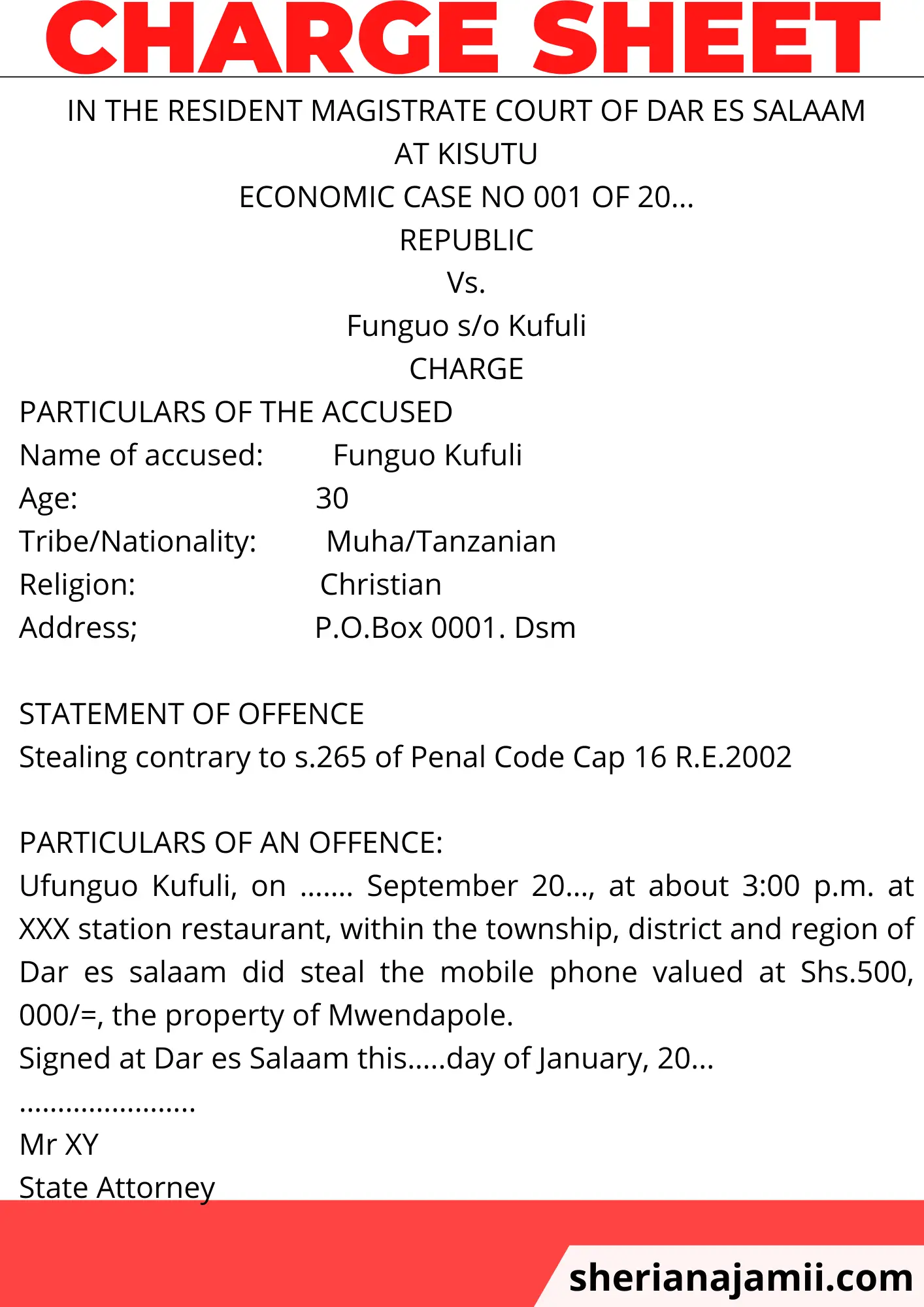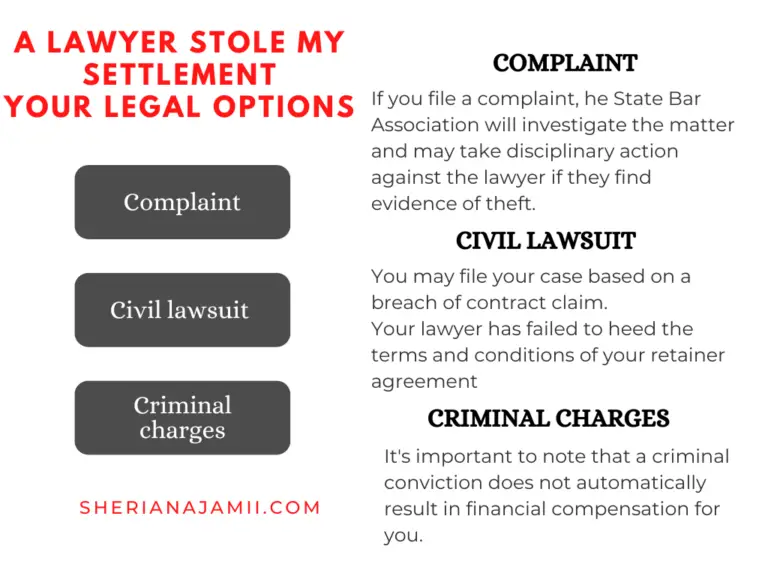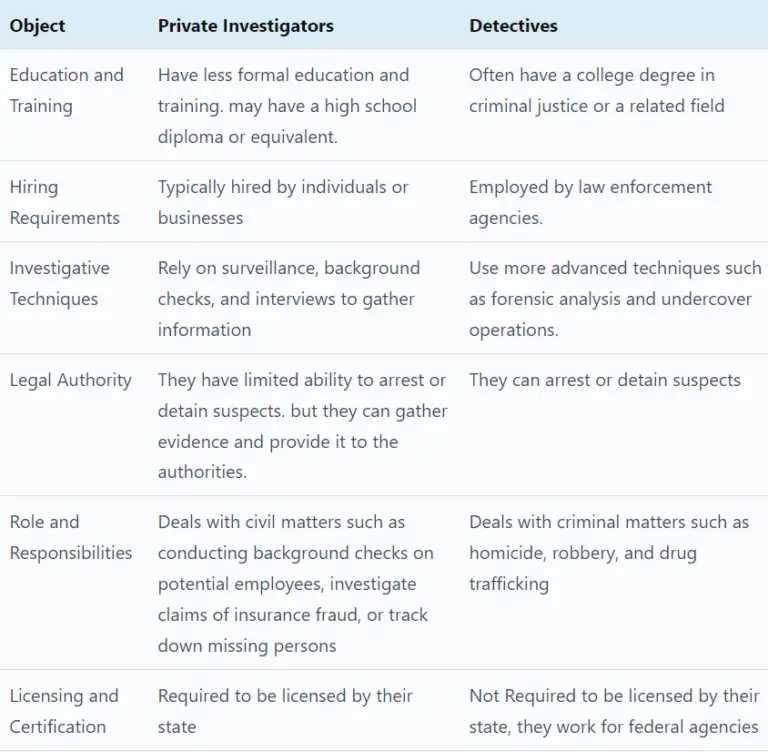Here you will learn everything you need to know about charge or as popularly known, charge sheet.
The document is popularly called the charge sheet, but in criminal law and procedure, it is known as a charge.
Throughout this post, I will use the word charge or charge sheet to refer to the same thing.
This post covers;
- What is the charge?
- Functions and importance of charge
- Who files the charge sheet in court?
- Contents of a charge sheet
- What is a defective charge sheet?
- How the charge sheet becomes defective
- Effect of a defective charge sheet
- Charge sheet sample
- etc.
Transform Your Communication, Elevate Your Career!
Ready to take your professional communication skills to new heights? Dive into the world of persuasive business correspondence with my latest book, “From Pen to Profit: The Ultimate Guide to Crafting Persuasive Business Correspondence.”

What You’ll Gain:
lets get started
What is the charge?
A charge is a written accusation against the accused of an offence or an allegation of an offence, which he is said to have committed. It specifies and furnishes the necessary details of the criminal case in a summary form.
Functions and importance of charge
The following are the functions and importance of charge sheet
- To inform the accused person about the offence for which he is charged, i.e., the charge contains particulars of such accusations, these include time, date, place, names and the manner in which the offence was committed.
- To enable the accused to prepare for his defence
- To enable the accused to decide rationally whether or not to plead guilty
- To enable the court to issue necessary court processes, like a summons.
- To confer jurisdiction to the court to proceed against the accused.
- To avoid taking the accused by surprise.
- For the purpose of record—criminal records are normally kept, thus a charge is convenient for that purpose.
Read: How to win a criminal case
Who files the charge sheet in court?
The charge sheet is prepared and filled by the state attorney working under the Attorney General’s office or public prosecutor.
The charge sheet is a must document in a criminal case.
According to criminal law and the procedure, it is It is mandatory to file a charge sheet because it enables the state/republic to prosecute the offender, the accused to defend himself and the court to decide the fate of the accused person.
Contents of a charge sheet
The primary contents of the charge sheet include the name of the court, parties of the case, name of the document, particulars of the accused, statement of the offence, particulars of the offence, and particulars of the drawer
Title of the Court
e.g., The District Court of Ilala at Samora Avenue Criminal Case No.220/2020
Parties of the case
e.g, Republic Vs Simba s/o Mkalimoto
Name of the document:
Charge
Particulars of the accused
Here particulars of the accused person(s) are given, thus the name, age, tribe, nationality and address.
Statement of the offence
This part should describe the offence shortly in ordinary language and without necessarily stating all the essential elements of the offence.
This part states the offence alleged to have been committed and a citation of the section, rule or order of the law alleged to have been violated. E.g. Arson c/s. 319 of the Penal Code, Cap.16
Particulars of the offence
This part should contain brief but clear and ordinary language, the elements/ingredients of the alleged offence. It should state what acts or omissions were done or omitted to be done.
The particulars of the offence must state the following: date, time, and the place the alleged offence was committed, the act or omission complained of, the name of the victim (if any), and the value of the property (if applicable).
For example E.g. Haraka s/o Mwendapole, on the 5th day of November 2003 at about 02:00 hours, within the Municipality of Tabora willfully and unlawfully set fire to a house belonging to one Sabuni s/o Kabati located at No.10 Ng’ambo Street in the suburb of Tabora Municipality.
Particulars of the drawer
name, address and signature of the person prepared the charge and the date the charge was prepared.
Space must also be left for the court to put in the date on which the charge so prepared was filed and admitted in court
What is important is that a charge should be as simple as possible, and the use of abbreviations should be avoided.
Some sections creating offences do define them, thus if the offence is defined by the law, it is sufficient to name it only.
But if it is not defined, then define it, but at the same time adhere to the charge as much as possible.
What is a defective charge sheet?
A defective charge sheet refers to a charge whose form or/and contents violate provisions of the applicable law. The charge may be defective either in form or substance.
A charge may be defective in substance when for example the evidence adduced discloses an additional offence to the one charged or it discloses a different offence to the original one. Or a charge may be defective on the form when it lacks particulars of the offence or it lacks the signature of the person who prepared it.
How the charge sheet becomes defective
The following are the circumstances that may render the charge sheet defective
Duplicity of Charges
This is the situation whereby the charge as laid contains two distinct offences but is made as one count. Such a charge is double, therefore bad for duplicity.
It is a serious error to allege more than one offence in a single count because sometimes the accused person may be guilty of one offence and not the other, and this also will make it difficult for the accused person to enter a proper plea of guilty or not guilty.
This means that each act committed by an accused person, which constitutes a complete offence in itself, should be the subject of a separate count.
Misquotation of Section Numbers
It is the duty of the prosecutor before signing a charge sheet to make sure that section numbers are correctly cited in the statement of offence. However, failure to quote a proper section number is not fatal unless it is shown specifically that there was a miscarriage of justice i.e. the accused was prejudiced.
Non-quotation of Section Numbers
It is important that proper sections must be quoted in the charge. Non-quotation is a curable irregularity but it should not be encouraged, as it will cause incompetence and recklessness on the part of the prosecutor. This irregularity is curable if;
- The accused was not prejudiced
- It was just a slip of the pen.
- It was not a result of the mistake of law.
Citing non-existent Section
The prosecution sometimes does this defect. The irregularity may or may not be curable. This will depend on the facts and circumstances of each case.
Insufficient Particulars
This is one of the omissions which render charges defective. This happens when the public prosecutor fails to include the most essential element of the offence. This omission renders your charge defective in substance and section 388 CPA cannot cure it.
Charge on a Repealed Law/Section
A charge on a repealed law/section is curable, provided that,
- The offence is in every essential the same under the old and the new law/section.
- No failure of justice may result from the alteration.
- The charge and the particulars are clear. However if the old and new law/sections differ, and do not repeat in similar terms the language of the old law/section the defect cannot be cured.
The variance between Charge and Evidence
The variance between charge and evidence renders the charge defective in substance unless it is amended and the amendment causes no injustice to the accused and as long as the accused person had notice of the amendment.
Effect of a defective charge sheet
Rejection
Court has the power to reject any charge which does not disclose any offence. Once the charge is rejected state may find the appropriate way to correct the charge and do the needful.
Amendment of charge
According to section 234(1) CPA, the court is empowered to order alterations of a charge at any stage of the trial if it finds that the charge is defective.
The alteration may be by way of amendment, substitution and addition. The purpose of alteration is to meet the end of justice, thus if it is shown that the alteration will cause injustice to the parties, then the magistrate is required not to make them. According to section 234(1) CPA, the alteration may be made when the charge is defective either in substance or form.
When a charge can be amended?
Section 234(1) CPA provides that a charge may be amended at any stage of the trial. However, the court cannot order the alteration of a charge after all the evidence has been taken and what remains is the preparation of a judgment.
When the charge is amended /altered, the court has to comply with;
- The court must call upon the accused to plead afresh to the altered charge.
- The accused has the right to request that any witnesses be called to give their evidence afresh or to be cross-examined by the accused or his advocate. It is the duty of the court to inform the accused of this right. The prosecution has also the right to re-examine the witnesses on any matters arising out of such cross-examination.
- The prosecution may recall and examine any witness who may have been examined.
Withdrawal and Re-Institution of a charge
The public prosecutor does this at any stage of the proceedings before a judgment is pronounced— S.98 CPA.
A public prosecutor may withdraw the charge after obtaining the consent of the court or maybe instructed by the Director of Public Prosecution.
The public prosecute may withdraw a charge either generally or in respect of one or more offences with which such a person is charged.
The withdrawal is done where the charge is defective with a view of instituting a proper charge.
Nolle Presque
The Director of Public Prosecution is empowered to withdraw charges/information under section 91(1) CPA. If the DPP decides to stop the prosecution of the accused, he is discharged. The discharge is not a bar to any subsequent proceedings against him based on the same facts should the need arise.
Charge sheet sample
The following is a simple example of a charge sheet
IN THE RESIDENT MAGISTRATE COURT OF DAR ES SALAAM
AT KISUTU
ECONOMIC CASE NO 001 OF 20…
REPUBLIC
Vs.
Funguo s/o Kufuli
CHARGE
PARTICULARS OF THE ACCUSED
Name of accused: Funguo Kufuli
Age: 30
Tribe/Nationality: Muha/Tanzanian
Religion: Christian
Address; P.O.Box 0001. Dsm
STATEMENT OF OFFENCE
Stealing contrary to s.265 of Penal Code Cap 16 R.E.2002
PARTICULARS OF AN OFFENCE:
Ufunguo Kufuli, on ……. September 20…, at about 3:00 p.m. at XXX station restaurant, within the township, district and region of Dar es salaam did steal the mobile phone valued at Shs.500, 000/=, the property of Mwendapole.
Signed at Dar es Salaam this…..day of January, 20…
…………………..
Mr XY
State Attorney
Conclusion
My aim here was to share with you every important thing you need to know about the charge sheet. Hope you have found this post useful. Kindly share it with others to spread the knowledge.
You may also read:
References
Criminal Procedure Act [CAP: 20 R.E 2002
Mshana, S. (N.D) Criminal Procedure Law: Dar es Salaam Police Academy



![How long it takes to become a lawyer? [timeline breakdown] 5 How long it takes to become a lawyer, timeline to become a lawyer, timeline of becoming a lawyer](https://sherianajamii.com/wp-content/uploads/2023/01/How-long-it-takes-to-become-a-lawyer-768x576.png)